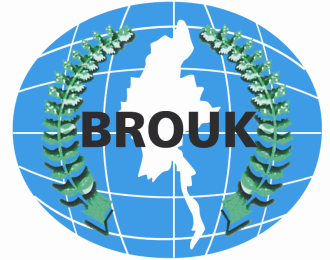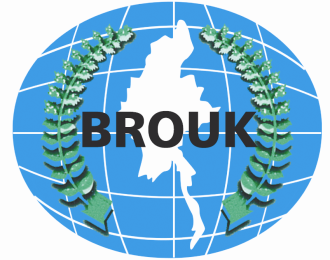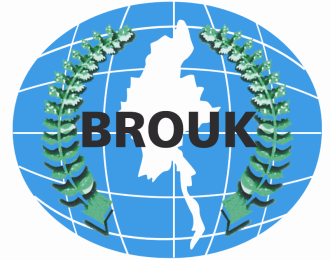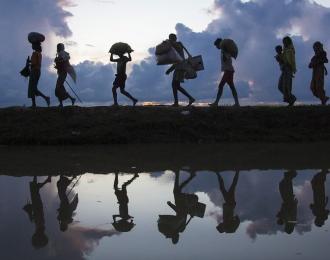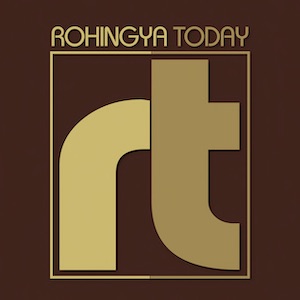
Middle East Institute
“It is an ongoing genocide (in Myanmar),” said Mr. Marzuki Darusman, the head of the UN Human Rights Council-mandated Independent International Fact-Finding Mission at the official briefing at the full Security Council on October 24, 2018.[1] This official briefing was officially requested by 9 out of the 15 Council members over the objection of China, Russia, Equatorial Guinea and Bolivia). [2]
On the same day, before the Security Council briefing, Darusman, former Attorney General of Indonesia who headed his country’s National Human Rights Commission and served as UN Special Rapporteur on human rights in North Korea, had held a press conference in New York where he was joined by Professor Yanghee Lee of South Korea, UN Special Rapporteur on human rights situation in Myanmar.[3]Echoing the UN Fact-Finding Mission Chief’s concerns for Rohingyas’ safety arising out of the continuing existence of structures, institutions, practices and executioners of Myanmar’s genocidal policies, Professor Lee officially opposed the scheme of repatriation of one million Rohingyas who have taken refuge across the borders on Bangladeshi soil.[4]
Amid calls for international accountability — international because Myanmar lacks an independent and competent judiciary, as well as the political will to bring to justice the main military perpetrators of the genocide[5] — the government of Bangladesh has prioritized the repatriation of Rohingyas.[6] To be sure, the massive influx of Rohingyas into Bangladesh has placed a heavy economic, social and political burden on the country.
The flurry of activities by Bangladesh authorities — including organizing and attending international conferences and hosting countless visits by foreign heads of state and delegations, and celebrities that are focused on addressing the root cause of the recurring waves of refugee inflows from Myanmar — indicate that the continuing presence of Rohingya refugees in the country is an all-consuming concern for both its government and society at large.[7]
Because third-country resettlement of one million Rohingyas is not a viable solution, Dhaka’s focus on repatriation — as opposed to holding Myanmar perpetrators of genocidal crimes accountable — is not only understandable but also warranted. However, the most crucial question is how to address the justifiable, widespread and profound fear of further waves of attacks and being sent back to live under genocidal conditions among the deeply traumatized Rohingyas in the camps in Cox’s Bazar district in Bangladesh.[8]
For two consecutive years, Prime Minister Sheik Hasina has gone to the UN General Assembly and presented her proposal to the international community in order to mobilize support for Bangladesh’s efforts to unload the burden placed on her country.[9] The large-scale impact of neighboring Myanmar’s genocide is all too visible for any visitor to the sprawling camp “city” in Cox’s Bazar. It is also a subject of criminal investigation by the pre-trial Chamber of the International Criminal Court after the ICC issued an unprecedented and fully justified ruling that the cross-border nature of Myanmar’s crimes — deportation and “other (international) crimes” — are within the Court’s jurisdiction and hence the preliminary investigations of allegations and facts must proceed,[10] despite non-signatory Myanmar’s official dismissal of the ruling as “meritless.”[11]
To her credit, Prime Minister Sheik Hasina has highlighted the essential need of the Rohingya, most specifically the group’s safety, upon return to their places of origin inside Myanmar. In her proposals to the UN in 2017 and 2018, the PM even raised, officially, the issue of establishing “safe zone” for the Rohingyas inside Myanmar[12]— and rightly so.
Having had to deal with chronically large waves of Rohingya exodus into the Bangladeshi territories since 1978,[13] Dhaka is best positioned to comprehend and appear to fully appreciate, the absence of physical group safety, which is the direct outcome of Myanmar’s genocidal policies and practices, for this largely Muslim ethnic minority population as the prime “push factor.”[14]
The predominantly Buddhist Myanmar has long singled out the Rohingya population — which qualifies, according to the UN Fact-Finding Mission report, as ‘protected group’ under international law[15] — for extermination on Myanmar’s soil. The military-controlled Myanmar state has perceived Rohingyas as a group with a distinct identity, language and culture, and as a demographic proxy which Bangladesh is using to ease its (Dhaka’s) population pressure[16]: although Bangladesh is 40% smaller in area than Myanmar, it is home to over three times as many people.
Accordingly, the Myanmar military has instituted systematic measures, both violent and non-violent, designed to change the demographic character of the predominantly Rohingya region of Northern Rakhine, having reversed radically the official recognition[17] granted to Rohingyas in the 1950s and early 1960s as an ethnic nationality of the Union of Burma, who are full and equal citizens, like the country’s other minority populations (e.g., Shan, Kachin, Kayah, Chin, Mon, Rakhine, etc.) and that the 2.5 townships of Maungdaw, Buthidaung and Rathae Daung formed the main administration region of Rohingya people.
When the Myanmar military realized that its peaceful scheme of changing the Muslim character of Northern Rakhine State of Rohingya homeland through the state-sponsored trans-migration of Buddhist and other non-Muslim internal migrants from other parts of the country was not having any appreciable impact on the region,[18] it decided to resort to waves of state-directed violence against the target-population of Rohingyas.
Since February 1978, Myanmar’s military leaders have attempted to reduce and eventually erase the Rohingyas’ presence from Bangladesh-Myanmar border region, which stretches 270 miles, framing the region next to the populous Muslim nation of Bangladesh as the “Western gate” of the Union of Myanmar. These systematic attempts at the erasure of Rohingya identity and presence are anchored in the military’s revisionist historical discourse — that Rakhine was a “purely Buddhist” land “contaminated” by the unwelcome intrusions and immigration of Muslims, as openly stated in The State’sWestern Gate (Yangon, 2016),[19] by retired General Khin Nyunt, former chief of the military intelligence services and one of the architects of what Amartya Sen calls “the slow genocide.”[20]
This official and popular discourse of “Fortress Myanmar” is not applied in the equally porous borderlands with the country’s two giant neighbors, China and India.[21] Inside Myanmar, it is public knowledge that the country has received hundreds of thousands of Chinese migrants from the bordering Chinese state of Yunnan — with some estimates putting the number at roughly one million. The Burmese military and political class, including Aung San Suu Kyi and her NLD party leadership were acutely aware of this illegal Chinese immigration[22] into what is known as “Upper Myanmar,” but both have kept quiet since Myanmar’s relations with China solidified after the post-Cold War Western bloc took punitive measures against the formerly non-aligned State on grounds of the well-documented egregious and pervasive human rights abuses. As a matter of fact, under the previous military-backed government of ex-General Thein Sein (2010-15), Myanmar had even created a new ethnic name — Mong Yang Myanmar — exclusively for the almost 90,000 ethnic Han which assisted the military’s operations against restive Myanmar ethnic nationalities such as the Kokant.[23]
The fact that Myanmar continues to deny its own official documentation supporting the Rohingyas’ claim of Western Myanmar as their homeland and to categorically dismiss their irrefutable historical and official group identity as Rohingyas[24] while imposing on the group a false identity of “Bengali,” that is, citizens of Bangladesh can only be understood within the framework of genocide.[25] It is not the lack of knowledge on the part of Myanmar leadership that ethnic identities are not simply innate or DNA-based, but are invented by political organizations and communities, states or sub-state level entities.
The overwhelming majority of the UN member states — save India, Japan, Russia and China — have been vocal in condemning Myanmar’s “gravest crimes in international criminal and humanitarian law,” as the UN Fact Finding Mission on Myanmar put it. But the public condemnations have not been matched by an equal amount of tangible support for the one million Rohingya genocide survivors in Bangladesh in terms of humanitarian funds, human resources (e.g., trauma counsellors, social workers, etc.), or livelihoods opportunities. Less than half of the need for humanitarian aid has been met.[26] Consequently, Dhaka feels enormous pressure to feed and house, however unsatisfactorily, such a large pool of refugees.
Against this background, the idea and schemes of repatriation, as well as Bangladesh’s anxiety over the need to begin the repatriation, need to be understood. Beyond the calls for justice and accountability in the form of ICC or ad hoc International Criminal Tribunal on Myanmar (i.e., International Criminal Tribunal on Yugoslavia or International Criminal Tribunal on Rwanda), Rohingya repatriation is correctly seen as the only viable, peaceful solution to one of the contemporary world’s greatest humanitarian challenges.[27]
Importantly, repatriation is interpreted and pursued by different key players for different strategic and policy ends.
Bangladesh advocates repatriation of Rohingyas, as they put enormous strain on Bangladesh government resources, on society and on the Environment.[28]
The guilty party of Myanmar agree, largely in principle, to receive the returning Rohingyas back as Aung San Suu Kyi and her foreign ministry strategists regard repatriation as a tactic to placate the outraged UN and other state players calling for the establishment of the international tribunal on Myanmar and supporting the ICC’s criminal investigation of Myanmar’s crimes of deportation and other high crimes. This is an open secret among the politically conscious Burmese. In fact, in a recent interview with the Radio Free Asia Burmese Service, Tun Tin, a well-known member of the Myanmar Chamber of Commerce and a Burmese crony, explicitly stated that repatriation is a way of alleviating the pressure of the international campaign for criminal accountability around Myanmar genocide.
China is pressuring both Bangladesh and Myanmar to start large-scale repatriation because the Communist leadership do not welcome the deepening of Western involvement in the resource-rich country which Beijing considers an integral component of its long-term strategic scheme of power projection into the Indian Ocean.
India is following suit out of a different logic: New Delhi has recently begun de-nationalizing the several million Muslims in the country’s restive northeast region of Assam, a first step towards Myanmar-style expulsion and deportation. Additionally, India is vying with China for influence over the ruling Burmese military since the early 1990s, which necessitates Delhi’s unconditional support for Myanmar’s policies towards Rohingyas.
Japan is pushing repatriation out of its own strategic calculations, lending Aung San Suu Kyi’s government media and money support,[29] in an effort to counteract China’s growing influence over Myanmar.
ASEAN is split between reformist Malaysia[30] which is openly pushing for strong measures to end the genocide and the rest of the Southeast Asian bloc, made up of largely authoritarian regimes.
Meanwhile, inside Myanmar, all the key pillars of Myanmar society and politics remain deeply genocidal in their outlooks. Nationally organized Buddhist monks continue to promote venomous anti-Rohingya view while rallying behind the main perpetrator, namely Myanmar Armed Forces. Anti-Rohingya public opinion has largely crystalized, as the direct result of the Myanmar military’s psychological warfare or mass propaganda campaign, using traditional media and, since 2012, Facebook, depicting Rohingyas, falsely as “Islamicists” and “Illegal Bengali invaders” hell-bent on taking over “Buddhist Myanmar.”
Aung San Suu Kyi herself and her ruling NLD party share the public view that Rohingya identity is “fake” — a political invention dating from the 1950s — and that Rohingyas really belong in Bangladesh. Even if Suu Kyi and her civilian government have the political will — and there is no indication they do — they have no control over the most powerful organ of the State, the Security Sector, and the most culturally influential pillar of Myanmar, the Buddhist Order. Locally in Rakhine, the shared homeland between Rakhine Buddhists and Rohingyas, Rakhine nationalists continue to mobilize openly against any large-scale repatriation.
Against this overwhelmingly hostile background — not to mention Myanmar’s state’s policies of persecution, including laws and regulations, which remain completely unchanged — no repatriation without guaranteed safety for Rohingyas is conceivable. The majority of Rohingyas may be illiterate, poorly educated or disorganized. This is in spite of Suu Kyi’s disingenuous public statement that her government has implemented 81 of 88 recommendations by the Rakhine Commission chaired by the late Kofi Annan.[31]
The 40 years of life under genocidal conditions have taught a bitter lesson: the Rohingyas’ physical safety in Myanmar — whether they be future returnees (1.2 millions) from Bangladesh, the estimated 400,000 trapped in Rohingya villages and Rakhine’s southern regional town of Buthidaung, or those in IDP camps — cannot be assured without international protection. It is inconceivable that without this requisite safety any repatriation will be voluntary or sustainable.
Just one week before the planned bilateral repatriation, Myanmar continues with its official — and non-credible — framing of the human rights and humanitarian catastrophe as a direct result of (Muslim) “terrorism.” UN Ambassador Hau Do Suan told Fox News that “the root cause of this humanitarian issue is because of the Arakan Rohingya Salvation Army (ARSA) — the Muslim terrorist group. They attacked against the government in Rakhine State in October 2016 and again in August 2017. This humanitarian problem was ignited by those terrorist attacks.”[32]
It is therefore urgently necessary for the issue of the guaranteed safety for Rohingyas in Myanmar to be placed at the center of all international policy discussions on Myanmar’s ongoing genocide.
However, no meaningful discussion which rightly prioritizes Rohingyas’ need for protection and guaranteed basic human and citizenship rights can take place in the face of the repeated refusals by the powerful Asian governments (such as Japan, China and India) and the Association of South East Asian Nations (ASEAN) to accept the UN Fact-Finding Mission’s dire warning that Myanmar genocide is “ongoing.”
To overcome this obstacle, the Rohingya people urgently need an international coalition of UN member states prepared to pool their respective diplomatic, commercial, political and even military influences in order to bring an effective end to Myanmar’s slow genocide. In his October 4, 2018 talk at the Council on Foreign Relations,Prime Minister of Malaysia Dr. Mahathir Mohammad stated openly that military intervention (in Myanmar) may be needed.[33]
Such interventions may not be in the cards, but certainly some form of coordinated and collective protection and guaranteed human rights for the Rohingya is fully warranted. In the attempts to set up protection mechanisms, churches and other non-Christian religious and civil society institutions can play more proactive and strategic roles, particularly given the fact that the religious and group identity of the Rohingya minority is a major driver behind Myanmar’s genocide.
[1] “Marzuki Darusman (Chairperson of the Independent International Fact-Finding Mission on Myanmar) on the situation in Myanmar - Security Council, 8381st meeting,” Webtv.un.org, October 24, 2018, http://webtv.un.org/watch/marzuki-darusman-chairperson-of-the-independe…; See also “Rohingya genocide is still going on, says top UN investigator,” The Guardian, October 24, 2018, https://www.theguardian.com/world/2018/oct/24/rohingya-genocide-is-stil….
[2] “China fails to stop U.N. Security Council Myanmar briefing,” Reuters, October 24, 2018, https://uk.reuters.com/article/uk-myanmar-rohingya-un/china-fails-in-bi…. See also “8381st Security Council Meeting: Situation in Myanmar,” UNmultimedia.org, October 24, 2018, https://www.unmultimedia.org/avlibrary/asset/2284/2284841/.
[3] “Ms. Yanghee Lee, Special Rapporteur on the situation of human rights in Myanmar and Mr. Marzuki Darusman, Chair of the UN Fact-finding Mission in Myanmar,” Webtv.un.org, October 24, 2018, http://webtv.un.org/watch/ms.-yanghee-lee-special-rapporteur-on-the-sit….
[4] Ibid.
[5] International Commission of Jurists, “Myanmar: Government’s Commission of Inquiry cannot deliver justice or accountability,” September 7, 2018, https://www.icj.org/myanmar-governments-commission-of-inquiry-cannot-de….
[6] Personal communications with Bangladeshi authorities including the Speaker of the National Parliament of Bangladesh and the Foreign Minister, between November 2017 and Fall 2018.
[7] Ibid.
[8] “Aid groups say Rohingya ‘terrified’ about Myanmar repatriation,” AFP, November 9, 2018, https://www.dhakatribune.com/world/south-asia/2018/11/09/aid-groups-say…. See also “Exclusive: ‘Can’t eat, can’t sleep’ - Rohingya on Myanmar repatriation list,” Reuters, November 9, 2018, https://uk.news.yahoo.com/exclusive-cant-eat-cant-sleep-rohingya-myanma…;
[9] Our 5-point proposal can solve Rohingya crisis: PM,” The Daily Star, October 17, 2017, https://www.thedailystar.net/city/our-5-point-proposal-can-solve-rohing…. See also “PM Hasina at UNGA: UN-Myanmar deal must end Rohingya crisis,” The Daily Star, September 28, 2018, https://www.dhakatribune.com/bangladesh/foreign-affairs/2018/09/28/pm-h….
[10] International Criminal Court, “Statement of ICC Prosecutor on opening a Preliminary Examination concerning the Rohingya,” September 18, 2018, https://www.youtube.com/watch?v=DBDakDv9s2o.
[11] “Myanmar Calls ICC Request For Jurisdiction Over Rohingya Expulsion ‘Meritless,’” Radio Free Asia, August 9, 2018, https://www.rfa.org/english/news/myanmar/myanmar-calls-icc-request-for-….
[12] “Bangladesh’s PM at UN urges ‘safe zones’ for Myanmar's Rohingya,” Agence France-Presse, September 22, 2017, https://www.telegraph.co.uk/news/2017/09/22/bangladeshs-pm-un-urges-saf….
[13] Dr. Jeff Crisp, former head of Policy Development and Evaluation at UNHCR, shares his first-hand knowledge of ‘the shameful history of Rohingya repatriation since 1978. See “We must not repeat the shameful history of returning Rohingya refugees,” Refugee Studies Centre, Oxford University, January 17, 2018, https://www.rsc.ox.ac.uk/news/we-must-not-repeat-the-shameful-history-o…" style="color:#0563c1; text-decoration:underline.
[14] See Natalie Brinham, “Breaking the cycle of expulsion, forced repatriation, and exploitation for Rohingya,” Open Democracy, September 26, 2017, https://www.opendemocracy.net/beyondslavery/natalie-brinham/breaking-cy…; and Maung Zarni and Natalie Brihnam, “Waves of Genocidal Terror against Rohingyas by Myanmar and the Resultant Exodus Since 1978,” Middle East Institute,http://www.mei.edu/publications/waves-genocidal-terror-against-rohingya….
[15] Members of the Rohingya community are protected under the UN Declaration on the Right of Persons Belonging to National or Ethnic, Religious and Linguistic Minorities. See “Report of the detailed findings of the Independent International Fact-Finding Mission on Myanmar,” Human Rights Council, September 18, 2018, p. 15, #45.
[16]See Maung Zarni and Natalie Brinham, “An Evolution of Rohingya Persecution in Myanmar: From Strategic Embrace to Genocide,” Middle East Institute, http://www.mei.edu/publications/evolution-rohingya-persecution-myanmar-….
[17] Official Encyclopedia of Burma (Burmese), Literary House, Union of Burma Government Press, V. 9, under “Mayu District” (of Rohingya), 1964. See also Gregory Poling, “Separating Fact from Fiction about Myanmar’s Rohingya,” Center for Strategic and International Studies, Washington, DC, February 13, 2014, https://www.csis.org/analysis/separating-fact-fiction-about-myanmar%E2%…; and Brigadier General Aung Gyi, Vice-Chief of Staff - Army, Myanmar Armed Forces, “Rohingyas are equal and full citizens and an ethnic minority integral to the Union of Burma,” Khit Yay (Current Affairs), Ministry of Defence, Rangoon, July 4, 1961, https://www.maungzarni.net/en/news/rohingyas-are-equal-and-full-citizen….
[18] A former military intelligence divisional head of the inter-agency Na Sa Ka based in Rakhine State capital of Sittwe openly admitted in a Burmese language essay that the peaceful means designed to change the demographic character of Muslim region of N. Rakhine failed because the military was not devoting enough financial resources
[19] See ex-General Khin Nyunt, The State’s Western Gate Problem (in Burmese, hereafter cited as “The State’s Western Gate Problem”) (Yangon: One Hundred Flowers Press, 2016). This is the single most detailed account of Rohingya persecution from the perspective of a key perpetrator, openly explaining different schemes, strategies and rationales, adopted by Myanmar military in order to change the demographic and ethnic character of the predominantly Muslim and Rohingya N. Rakhine State of Myanmar. Khin Nyunt was a young major who had played different roles since the very first state-directed terror campaign against Rohingyas under the false disguise of “illegal immigration” checks in February 1978 until his ouster as chief of military intelligence in October 18, 2004. In 1992, he founded Na Sa Ka, the border affairs inter-agency instrument of persecution made up of the ministries of Immigration, Customs, Religious Affairs, Justice, Home Affairs, Defence, and Foreign Affairs, which was formally dismantled only in 2013: for the agency came under a close scrutiny by international researchers and media as it came to be known as the main instrument of Myanmar genocide. Despite its formal dissolution the same repressive mission and institutionalized practices of persecution continue.
[20] Amartya Sen, “The Slow Genocide of the Rohingya,” Harvard University, November 4, 2014, https://tribunalonmyanmar.org/2014/11/15/the-slow-genocide-of-the-rohin…; See also Maung Zarni and Alice Cowley (aka National Brinham), “The Slow-Burning Genocide of Myanmar’s Rohingya,” Pacific Rim Law & Policy Journal 23, 3 (June 2014): 683-754, http://digital.law.washington.edu/dspace-law/handle/1773.1/1377.
[21] Myanmar shares over 1,000 miles of borders with each of these neighbors in the West, Far North and the East.
[22] Personal communications with a former member of the National League for Democracy party team which screened public letters sent to the party leader Aung San Suu Kyi who answered written questions in her well-publicised weekly “Democracy Forum” which she held at the entrance of her house in Rangoon. Myanmar military intelligence has been widely blamed for “selling citizenship” to thousands of Han Chinese immigrants, residents and traders from the Sino-Burmese border province of Yunnan.
[23] “The Mong Wong, Burma’s newest citizens, face backlash,” ReliefWeb, May 6, 2016, https://reliefweb.int/report/myanmar/mong-wong-burma-s-newest-citizens-…" style="color:#0563c1; text-decoration:underline.
[24] At his invitation-only official talk at Chatham House in London in July 2013, the then Myanmar President and ex-General Thein Sein repeated the institutionalized denial: ”We do not have a group named Rohingya.” David Mepham, Dispatches Burma: “Excuse me, Mr. President…”, Human Rights Watch UK, July 19, 2013, https://www.hrw.org/news/2013/07/19/dispatches-burma-excuse-me-mr-presi… .
[25] As part of the systematic destruction of a targeted racial, ethnic, religious or national group, in whole or in part, Raphael Lemkin, who coined the term genocide, conceived genocide as a two-phase process with respect to the group’s identity or “national pattern”, as he called it: first, the destruction of the group’s identity/pattern and second, the imposition on those group members, who survive the destruction, of a new identity/pattern as chosen by the perpetrators. This crucial point is often overlooked. See Raphael Lemkin, Axis rule in Occupied Europe, (Clark, NJ: Lawbook Exchange, Ltd., 2008), specifically Chapter IX, “Genocide”: 79.
[26] “Int’l humanitarian appeal for Rohingya crisis underfunded: UN chief,” China Daily, August 29, 2018 http://www.nationmultimedia.com/detail/breakingnews/30353212. ;
[27] For a thoughtful essay on putting the rights, safety and well-being of the Rohingyas at the center of policy discussions, see Bill Richardson, “Accountability Alone Will Not Solve Myanmar's Rohingya Crisis,” TIME, November 5, 2018, http://time.com/5442807/myanmar-bangladesh-rohingya-acountability-bill-….
[28] Mehdi Chowdhury, “Rohingya refugees remain a heavy burden on Bangladesh,” The Conversation, August 20, 2018, http://theconversation.com/rohingya-refugees-remain-a-heavy-burden-on-b…. >
[29] Writing in a Washington Post op-ed, Japan’s Foreign Minister Taro Kono exhorts the international “not to criticize, but to patiently support Myanmar’s own efforts for the early, safe, voluntary and dignified repatriation of refugees.” See Taro Kono, “The world must support Myanmar and Bangladesh,” Washington Post, September 25, 2018, https://www.mofa.go.jp/s_sa/sea2/page4e_000905.html.
[30] PM Mahathir Mohammad, “The world needs to draw the line. Military actions may be necessary (to end Myanmar genocide)," Council on Foreign Relations, New York City, October 4, 2018, https://www.youtube.com/watch?v=JfwHmy_3UDQ. (Hereafter “The world needs to draw the line.”)
[31] Aung San Suu Kyi, “Democratic Transition in Myanmar: Challenges and the Way Forward,” The 43rd Singapore Lecture, Singapore, August 21, 2018, http://www.globalnewlightofmyanmar.com/democratic-transition-in-myanmar….
[32]“Burma doubles down on claims to justify treatment of Rohingya minority,“ Fox News, November 10, 2018, https://www.foxnews.com/world/burma-un-ambassador-denies-rohingya-genoc….
[33] “The world needs to draw the line.”
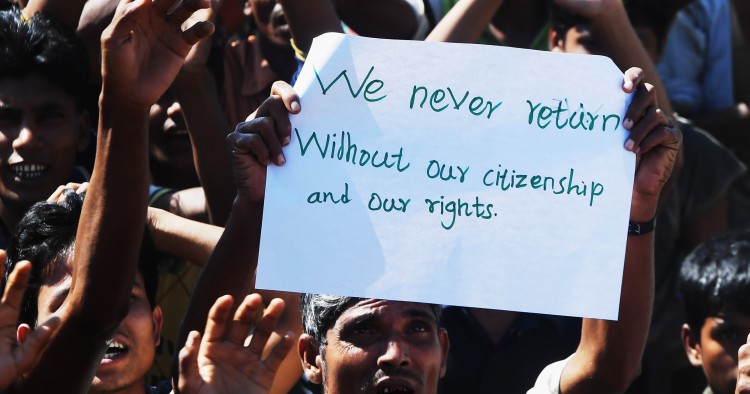
![Locals evacuate Rohingya refugees from a boat that came ashore on the north coast of Indonesia's Sumatra island in June 2020. The UNHCR says the journey across the Andaman Sea last year was deadlier than ever before [Rahmad/Antara Foto via Reuters]](/sites/default/files/styles/grid_list_330x260_/public/2025-05/2020-06-25T000000Z_355446050_RC2CGH9LTK3V_RTRMADP_3_INDONESIA-ROHINGYA.jpeg?itok=V6ouOxeq)
